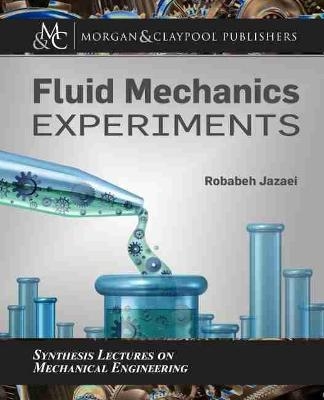
Fluid Mechanics Experiments
Morgan & Claypool Publishers (Verlag)
978-1-68173-928-1 (ISBN)
Robabeh Jazaei is an Assistant Professor of Civil Engineering in the Department of Physics and Engineering at Slippery Rock University of Pennsylvania. She received her Ph.D. in Civil and Environmental Engineering from the University of Nevada, Las Vegas.Dr. Jazaei has years of professional and academic experience. She taught a broad range of courses and laboratories with the focus of solid and fluid mechanics, as well as structural design in several universities. She is well known for practicing pedagogy with illustrative approach to simulate the interest in engineering courses and facilitate students' learning. Dr. Jazaei taught fluid mechanics in 2002 for the first time and since then she has been inspired to provide graphical guidance to help students to enjoy the fluid mechanics' laboratory. From 2018-2020, she has not only lectured fluid mechanics continuously but also worked closely with civil engineering students in 14 laboratories at the University of Wisconsin-Platteville. During these years, Dr. Jazaei realized the need to help students perform fluid mechanics experiments and write an effective technical report. Dr. Jazaei also served as an adviser for many senior design and research teams. Her research interest has focused on a broad spectrum of the numerical and experimental analysis of structures, concrete failure mechanisms, and nanomaterials characterization in cementitious composites. She received several academic and professional certifications for design, construction management, and professional development. Dr. Jazaei is a voting member of American Concrete Institute (ACI) Committee 241-A01 (The Application and Implementation of Nano-Engineered Concrete), member of American Society of Civil Engineers (ASCE), American Society of Mechanical Engineering (ASME), and American Society of Heating, Refrigerating and Air-Conditioning Engineers (ASHRAE).
Acknowledgments
How to Write a Technical Report
Fluid Properties
Fluid Statics-Pressure Measurement and Hydrostatics
Fluid Dynamics
Internal Flow
External Flow
References
Author Biograph
| Erscheinungsdatum | 02.10.2020 |
|---|---|
| Reihe/Serie | Synthesis Lectures on Mechanical Engineering |
| Verlagsort | San Rafael |
| Sprache | englisch |
| Maße | 191 x 235 mm |
| Gewicht | 333 g |
| Themenwelt | Naturwissenschaften ► Physik / Astronomie ► Mechanik |
| Naturwissenschaften ► Physik / Astronomie ► Strömungsmechanik | |
| Technik ► Maschinenbau | |
| ISBN-10 | 1-68173-928-3 / 1681739283 |
| ISBN-13 | 978-1-68173-928-1 / 9781681739281 |
| Zustand | Neuware |
| Haben Sie eine Frage zum Produkt? |
aus dem Bereich


